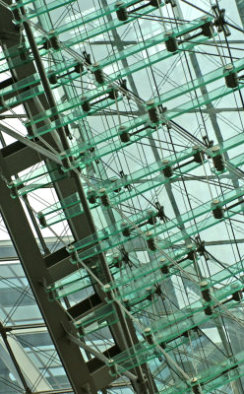








ADNet@soton.ac.uk
increased risk of N losses to the environment via ammonia emissions and nitrate leaching if the digestate is surface broadcast, and rates in excess of
crop demand. Although digestate is a valuable source of nutrients in agriculture and horticulture, its nutrient availability and potential environmental
impacts have been much less researched compared to livestock manures, although this is essential for the provision of robust agronomic advice to
growers, and meaningful life cycle and environmental impact assessments.
The fundamental science concepts linking the processing of organic resources to their agronomic potential and environmental impacts are only now
beginning to be explored. The results are not only essential in establishing concepts such as ‘end of waste’, ‘stability index’ and ‘GHG potential’ but
also in establishing process inputs and processing requirements to produce ‘designer digestates’ and value added products, with properties aligned
to their agricultural requirements. Processing techniques for nutrient removal, e.g. struvite precipitation and ammonia stripping are being developed
in conjunction with AD, whilst using digestion in conjunction with high rate algal cultivation for bio-energy production may allow nutrients to be
reclaimed in conjunction with short rotation carbon capture.
The benefits and impacts of different strategies for processing and utilising digestate may be realised at a broader scale than at just the farm-scale.
For example, the GHG savings of fertiliser production and use, if digestate replaces the use of fertilisers. The assessment of the wider benefits and
impacts of different anaerobic digestion, digestate processing and digestate use strategies requires approaches such as life cycle analysis.
Societal Challenges
The introduction of large-scale technology into new areas requires wider scrutiny of the societal impacts of that technology alongside an interrogation
of the motivations and processes towards achievement of the technoscientific goals. Anaerobic digestion is no exception and in many respects is
more in the spotlight due its dual function as a waste treatment process and a potential new biotechnology.
Interactions between particular technologies, society and individuals cover a range of scales and can shift according to the contexts being studied.
We have yet to explore fully how AD technologies and processes are being understood within wider society and what anticipated benefits and
concerns may arise from different stakeholder groups. The development of modified or synthetic biological communities; risks of pollution incidents,
fugitive greenhouse gas emissions; odours; intrusion from new biotechnology industry plants; and changes in natural and agricultural landscapes
through introduction of novel feedstocks are just some of the numerous challenges we must seek to understand from social scientific perspectives.
Current and future developments will also require direct economic analysis of the process which can be further linked to a wider systems boundary
taking account of Life Cycle Analysis and Environmental Impact Assessment aspects. Such economic assessments are important tools in relation to
policy drivers and for generating relevant regulation, and, as with the sociological challenges must run concurrently with technology development and
new market opportunities.
Specific Aims:
To explore approaches to:
•
Improve sustainable nutrient use efficiency of whole digestate and digestate fractions (liquid and fibre) in agricultural and horticultural systems
•
Develop processes for nutrient removal from digestate fractions
•
Produce value-added products from digestate fractions
•
Assess wider benefits and impacts of a range of digestate optimisation strategies
•
Map the ethical and social landscape of emerging AD and associated technologies
•
Understand the technological development and impacts in a wider societal context
•
Interact successfully within inter-disciplinary and cross-sector collaborations in pursuit of AD goals
•
Conduct responsible research and innovation in the AD arena
Environmental Interactions and
Societal Challenges Working Group
This Working Group will explore i) the optimisation of digestate and processed digestate fractions (liquid and fibre) as sustainable nutrient sources in agricultural/horticultural systems, ii) the processing of digestate to develop added value products, and iii) the wider societal benefits and impacts of anaerobic digestion and its associated technologies. Agronomic and Environmental interactions Like all biotechnological processes AD produces an effluent, which itself may be derived from a waste further upstream when the process is used within a linked biorefinery concept. The digestion process is intended to stabilise the organic carbon fraction in the input stream, leaving only those forms that are not readily converted to gaseous carbon. There are three major categories of feedstocks for anaerobic digestion: crops, livestock manures and food wastes, with the resulting digestate composition reflecting the nutrient inputs via these sources. The digestion process is conservative in terms of the nutrients added to the digester in feedstocks, i.e. nitrogen, phosphorous and potassium (NPK), but during the digestion process the proportion of available N increases, and whilst this represents an extremely valuable source of plant nutrients, there is an


- Current Events
- Previous Events
- Research Colloquium 2019
- ECR 2018 York
- ADNet/FoodWasteNet - Valorisation of ABPs - Mar 18
- Supergen/ADNet Integration - Feb 18
- Research Colloquium 2017
- Novel Feedstocks Lincoln - Apr 17
- Joint NIBB ECR Careers
- ADBA AD Net R&I - Mar 17
- GCRF Johannesburg & Stellenbosch
- GCRF Nairobi Workshop - Jan 17
- IFA Aspatria - Nov 16
- AFBI Small Farm AD - Nov 16
- MEC Newcastle - Sep 16
- Early Career Researcher - Jul 16
- UK AD & Biogas R&I - Jul 16
- AnMBR In-situ Cleaning - Jun 16
- Science Meets Industry - May 16
- R&I Photo Gallery - Apr 16
- AnMBR Workshop - Jan 16
- AD Network at AD Biogas - Jul 15
- Early Career Researcher - Jun 15
- R&D Photo Gallery - Apr 15
- Travel & secondment
- Secondments and overseas travel bursaries



















